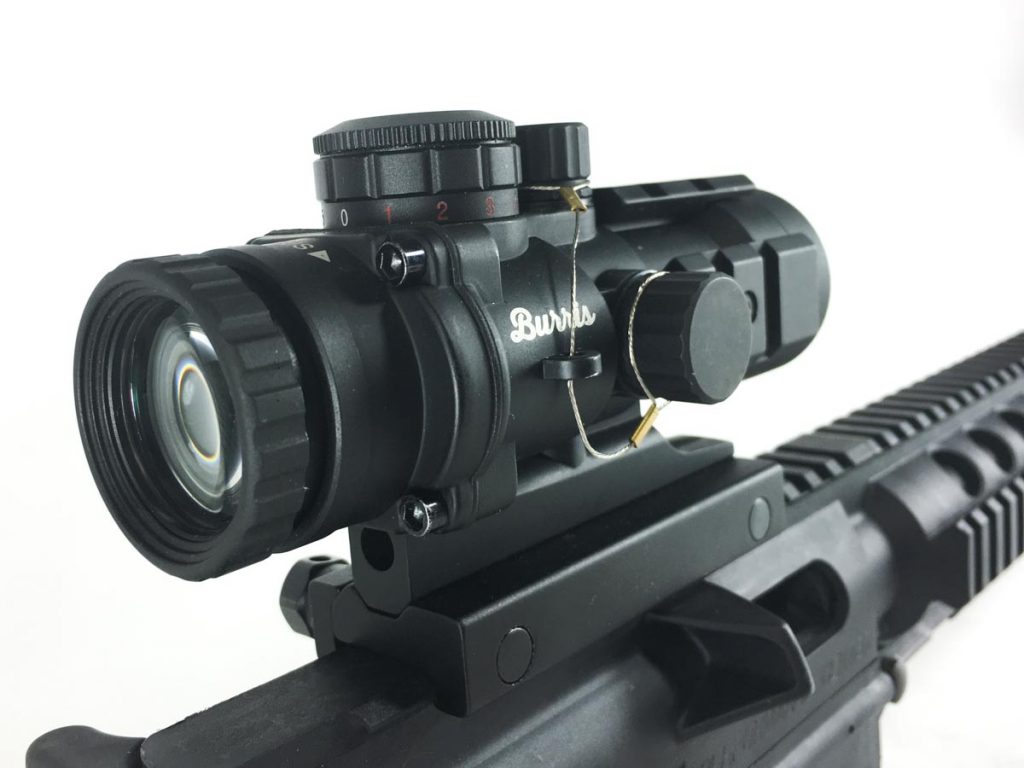
There are at least three main categories of AR optics, red dot, fixed power scopes, and high-magnification scopes. Which do you choose
?
There are plenty of reasons that the AR-15 has become so popular. It’s handy, easy to shoot, configurable, multi-caliber, and has low recoil. Oh, and it’s just plain fun.
Matching the seemingly infinite number of AR rifles on the market is a multitude of suitable optics. Red dots, holographic sights, fixed-power scopes, and variable-power scopes fill the shelves, so how do you choose? Let’s take a look at some factors to consider, then we’ll discuss some pros and cons of some of the common categories of AR-15 optics.
What’s your range?
Step one to finding the perfect optic for your AR-type rifle is to figure out what your most likely range requirements are. In other words, at what distance will you want or need to shoot it most of the time?
Home and Property Defense: If it’s for home defense, the distance will be measured in feet unless you live in the boonies, in which case you need to account for extremely short distances and possibly medium range too. Just remember, self-defense only applies if you are in direct and immediate danger, so while the ability to reach out at a distance may sound appealing on the surface, it may not be a realistic defensive scenario.
Critter Patrol: Maybe your AR rifle requirements related to varmint control. Got things like coyotes getting into your business? Depending on the type of critter (coyotes, prairie dogs, etc.) you might want to hit very small targets hundreds of yards away.
Hunting: If you hunt with an AR-type rifle, you might be into alternate calibers that increase effective range. Then again, terrain and ethical considerations may limit your realistic ranges to a hundred or so yards anyway. Depending on the type of game your after, you may want to limit your range based on the kinetic energy available at the target. For example, if you want 1,000 foot-pounds of energy at the target, that limits the standard AR-15 with 55-grain bullets to about 115 yards. Of course alternate calibers will extend that energy-based effective range.

A low-magnification optic like this 3x Burris AR-332
will take you a surprisingly long way.
Precision Shooting: Perhaps you want to limit range based on predictable performance at supersonic projectile velocity. That standard 55-grain bullet will go trans-sonic at about 850 yards, which is arguably farther than the cartridge was designed for anyway. However, if you have an alternate caliber AR-type rifle chambered in something like 6.5 Creedmoor, you can stay supersonic, and have predictable drop, out past 1,500 yards depending on conditions.
Once you’ve got your most probable usage scenarios worked out, you can evaluate the different categories of optics alternatives. There are three general categories: zero magnification, low fixed magnification, and magnified rifle scopes. Let’s take a closer look at each along with their respective pros and cons.
Zero Magnification Optics
Commonly referred to as “red dot sights”, for selection purposes, it might be easier to think in terms of zero magnification optics. Whether the underlying technology can be either reflex or holographic (see the most recent feature in this series, Optics Buying Guide: Holographs and Red Dots for more detail), the end result is mostly the same. You look through a piece of glass mounted in a small frame or tube and see a dot or reticle superimposed on your target. There is no magnification, so when you view your sight picture with both eyes open, you’ll see a perfectly natural view, just with a dot or reticle hovering out in space.
Zero magnification may sound scary and imprecise, but it’s really not, especially at ranges appropriate for the .223 Remington / 5.66mm AR-15. Most people would agree that shooting at something 500 yards away is stretching the capability of that cartridge, but good marksmanship skills will allow you to hit a target at that range with a simple red dot sight. Let’s look at the math to see how the view and aiming dot look at different ranges.







Got something to say?